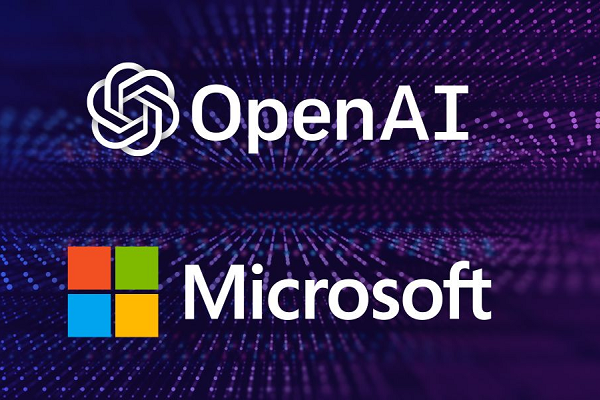Microsoft Scores Exclusive License to the Much-Hyped GPT-3 Language Model
 Microsoft will exclusively license the powerful GPT-3 language model from artificial intelligence developer startup OpenAI. The tech giant will apply the language model to improving and designing new AI services through the Azure platform for customers. The exclusivity doesn’t apply to the GPT-3 API that OpenAI launched in June, and for which developers have submitted tens of thousands of applications, according to OpenAI.
Microsoft will exclusively license the powerful GPT-3 language model from artificial intelligence developer startup OpenAI. The tech giant will apply the language model to improving and designing new AI services through the Azure platform for customers. The exclusivity doesn’t apply to the GPT-3 API that OpenAI launched in June, and for which developers have submitted tens of thousands of applications, according to OpenAI.
GPT-3 Envy
OpenAI caused a stir when it unveiled GPT-3, with some seeing its advances in unsupervised learning as presaging a fundamental shift in conversational AI. The model is made up of 175 billion parameters and is able to respond to the natural conversation in ways that seem very close to human, without the need for human supervision of its learning. The licensing deal will let Microsoft augment its own work with the model on the commercial level, but without hemming in OpenAI in sharing the API for GPT-3 with interested developers.
“We see this as an incredible opportunity to expand our Azure-powered AI platform in a way that democratizes AI technology, enables new products, services and experiences, and increases the positive impact of AI at Scale,” Microsoft chief technology officer Kevin Scott explained in a blog post announcing the deal. “The scope of commercial and creative potential that can be unlocked through the GPT-3 model is profound, with genuinely novel capabilities – most of which we haven’t even imagined yet. Directly aiding human creativity and ingenuity in areas like writing and composition, describing and summarizing large blocks of long-form data (including code), converting natural language to another language – the possibilities are limited only by the ideas and scenarios that we bring to the table. Realizing these benefits at true scale – responsibly, affordably and equitably – is going to require more human input and effort than any one large technology company can bring to bear.”
The new licensing deal is, in some ways a supplement to the one OpenAI and Microsoft began last year to incorporate OpenAI’s tech in Microsoft products. As part of the agreement, Microsoft is investing $1 billion in OpenAI to partner on new AI technology for Azure. That arrangement has started to bear fruit in May when Microsoft and OpenAI introduced the AI Supercomputer, which they claim is the fifth most powerful computer in the world.
Hype and Hope
GPT-3 drew a lot of attention from AI experts when it arrived. A combination of scale and design makes it much better at some kinds of conversation, and the idea that you don’t have to invest a lot of effort in setting up a training program to get it to respond as desired is attractive to all the companies who want an AI that can mimic human creative thought. How well the model would perform in the wild, however, is still uncertain. The excitement about GPT-3 making analogies and discussing philosophy should be tinged by some skepticism.
“Despite the hype, GPT-3 is not likely to have a significant impact on conversational AI in the near term,” Voicebot founder Bret Kinsella explained in the Voice Insider newsletter when GPT-3 first debuted. “Its ability to answer complex questions with such seemingly cogent responses and conduct pattern matching that would escape many humans has led some to believe artificial general intelligence is right around the corner. However, upon further investigation, these erudite responses look more like a convincing parlor trick than actual intelligence – a Mechanical Turk of the cloud and internet era where the secret is a large dataset instead of a deft chess player. As good as GPT-3 is at answering seemingly complex questions, it is also equally inept at answering simple questions.”
There is a longer-term promise in GPT-3, however. Its natural language generation ability could lead to faster training for speech recognition models and improve how AI assistants sort data for answering multilayered questions. That speculation may undersell what GPT-3 can do with Microsoft’s vast computing and data resources behind it, but any real revolution involving GPT-3 will probably emerge quietly over several years, not as a self-aware intelligence packaged into the next iteration of Windows.
Follow @voicebotai Follow @erichschwartz
Microsoft Upgrades Azure AI to Analyze Health Records and Streamline Voice App Creation
Microsoft Spins Out Chinese Chatbot Xiaoice to Independent Operations
Microsoft Adds New Speech Styles and ‘Lyrical’ Emotion to Azure AI Toolkit








